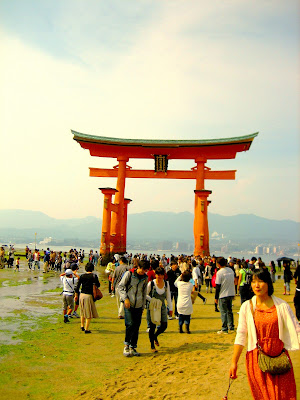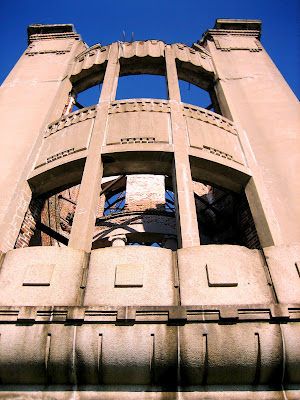Itsukushima is located next to Hiroshima Bay in the Inland Sea of Japan. Popularly known as Miyajima this Island belongs to Hayashi Razan's Nihon Sankei. Nihon Sankei is the list of three most popular sightseeing places in Japan. Beside Miyajima there are the sandbar of Amanohashidate and the islands of Matsushima. The most beautiful building on Miyajima is the Itsukushima shrine.
Build in 593 it was destroyed and rebuild many times. This shrine stays on pillars on the beach. By the daily moving of the water, it is on land in the morning and seems to swim over the see at the evening. A lot of people come there to watch the water slowly moving in the shrine.
Most popular view of this island is the 16 meter high torii, which stays in the water 160 meter before the shrine. Till tree in the afternoon visitors can walk beneath the torii and make photos. It is a tradition to put a 5 Yen coin in the cracks in the wood or between the corals like looking polyp colonies which cover the underwater standing part of the gate and make a wish.
All main buildings of Itsukushima are connected by a 280 meter long corridor. There is also the oldest Noh-theater stage in the world. The shrine and the torii are listed as a UNESCO World Heritage Site and are Japanese Nationals Treasures.
If you plan to visit Itsukushima you can take a ferry from Hiroshima or Miyajimaguchi. You should try oysters at one of the stands in the shopping area, this is the regional specialty. The typical souvenirs are the wooden rice spoons. Monkeys and deer move freely. You should watch out especially if you carry something eatable with you, deer might be seen in Shinto as a messenger of gods, but they often act aggressive while trying to snatch some food from tourists.
If you would have time you should visit the Mount Misen. Parts of it are still covered by primeval forest. By a ropeway you can reach a shrine were by the monk Kukai ignite fire burn already for more than thousand years.
















